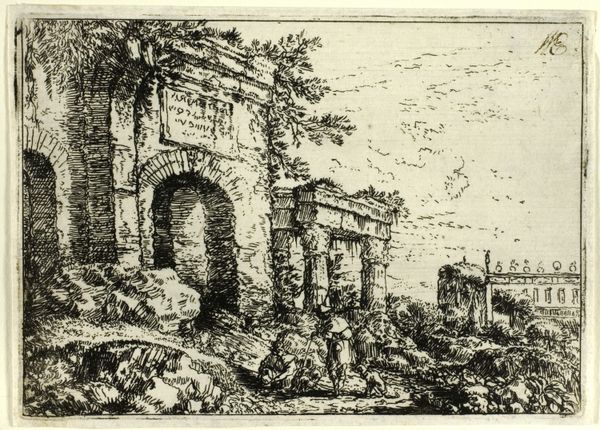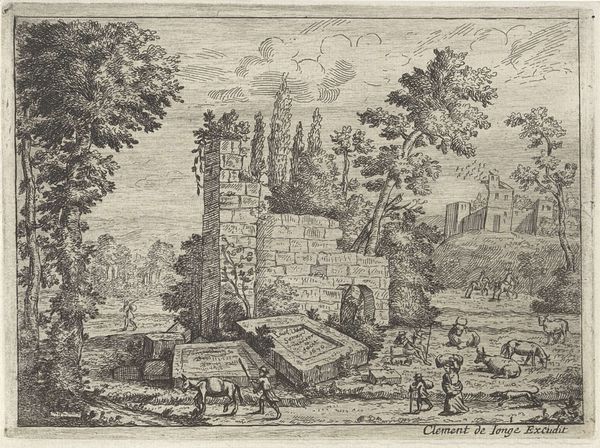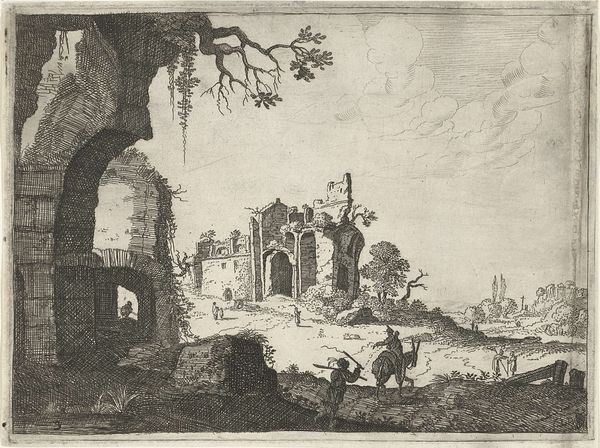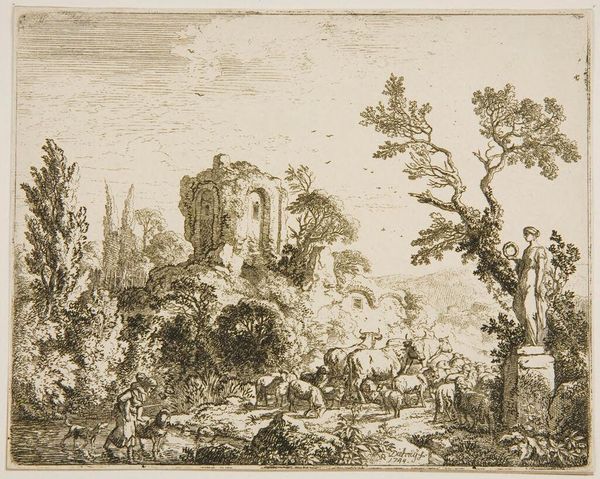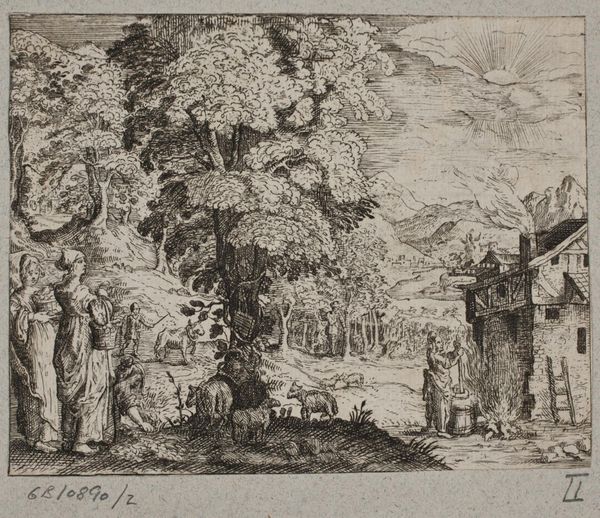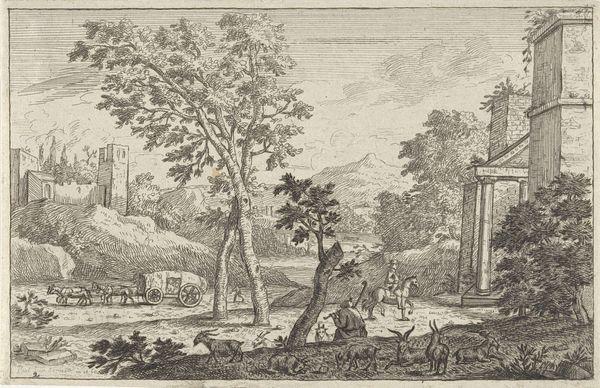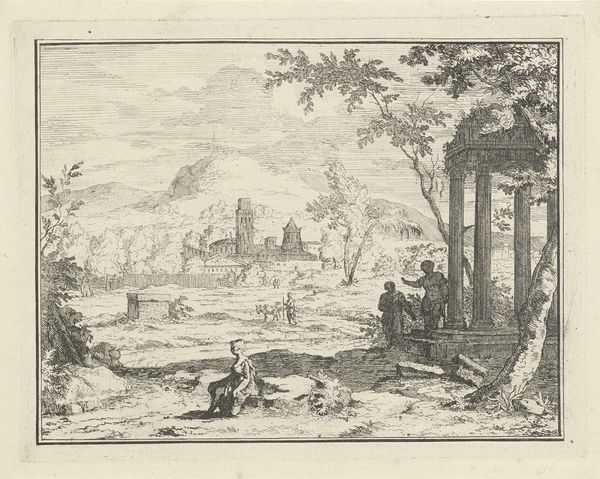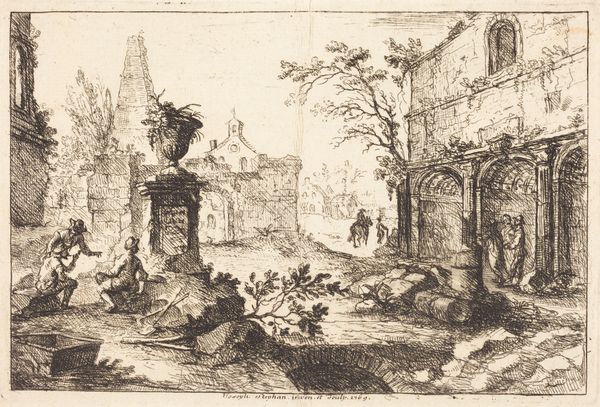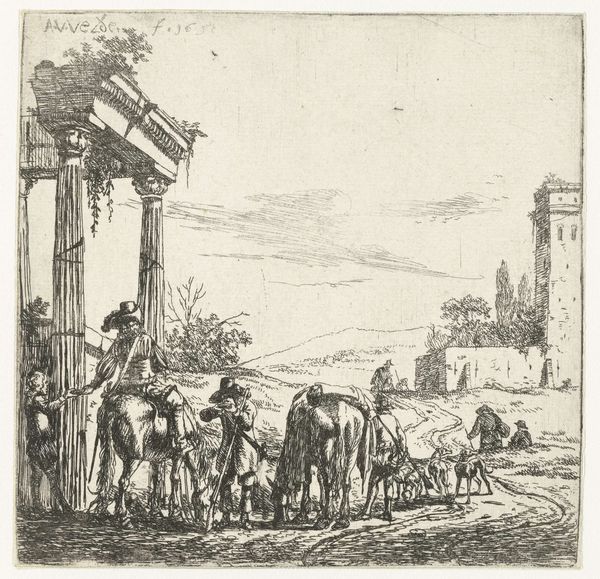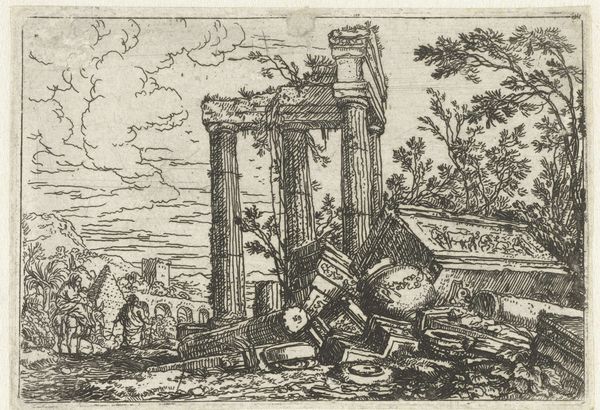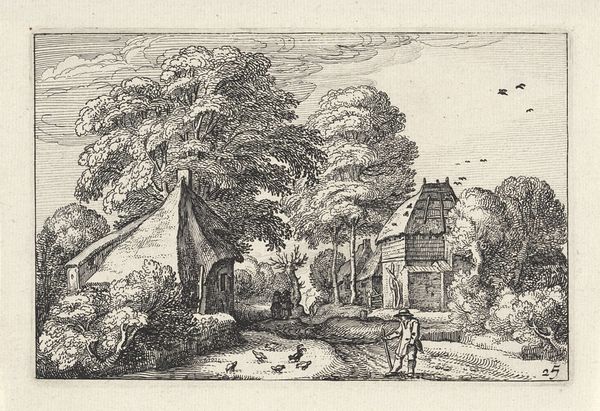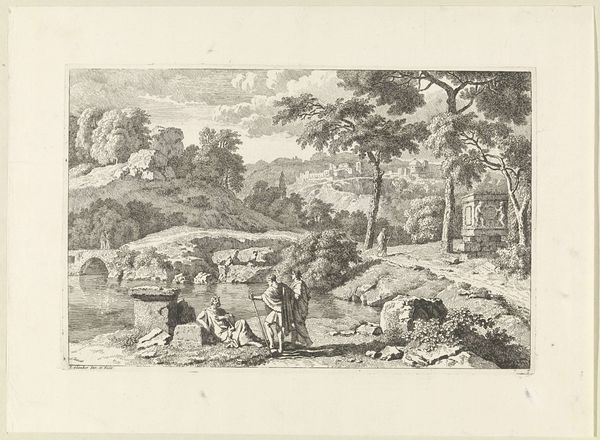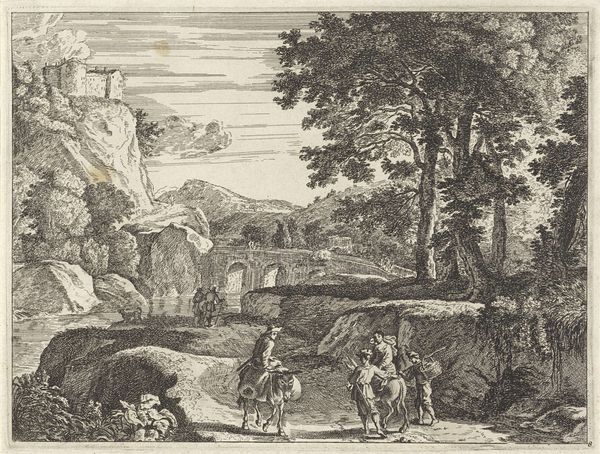
drawing, print, etching, paper, ink
#
drawing
#
ink painting
# print
#
etching
#
landscape
#
paper
#
ink
Dimensions: 76 × 111 mm (image/plate); 82 × 113 mm (sheet)
Copyright: Public Domain
Curator: This is “Italian Landscape with Ruins,” an etching and ink print on paper by Jonas Umbach. Editor: It feels melancholic. The architectural ruins suggest a vanished grandeur. The tight hatching and cross-hatching give it a sense of claustrophobia, despite the implied landscape. Curator: The linear precision achieved through etching truly allows for the detailed depiction of crumbling structures and overgrown foliage. The strategic deployment of chiaroscuro gives spatial definition and lends atmospheric depth. Editor: Ruin landscapes became fashionable. What are the social connotations of this picturesque representation? What is the message from the fallen ruins that has become picturesque scenery for leisurely onlookers? Curator: The visual contrast underscores a thematic tension between the eternal aspirations of architecture and nature’s entropic force, questioning the permanence of human achievements in relation to the all-encompassing power of time. Editor: It would be easy to suggest that ruins serve to symbolize the transience of human glory and the inevitability of decay, reminding viewers of their mortality and limitations. Curator: Perhaps. However, this piece compels consideration of how constructed imagery of a nation's history influences public perception. Consider, if the artist wasn't literally drawing ruins, they might be trying to figuratively do it. Editor: So perhaps it presents the relationship between idealized images of the past and present political realities of nations still being built. I now see more in its textured marks than just shadow and light. Curator: Exactly. An aesthetic reflection becomes a potent mirror reflecting society itself. Editor: I appreciate seeing how closely examining the line work and considering the artist's position in their context can reshape our viewing experience. Curator: Precisely, recognizing the inherent formal construction helps contextualize the broader social messages it is designed to present.
Comments
No comments
Be the first to comment and join the conversation on the ultimate creative platform.
